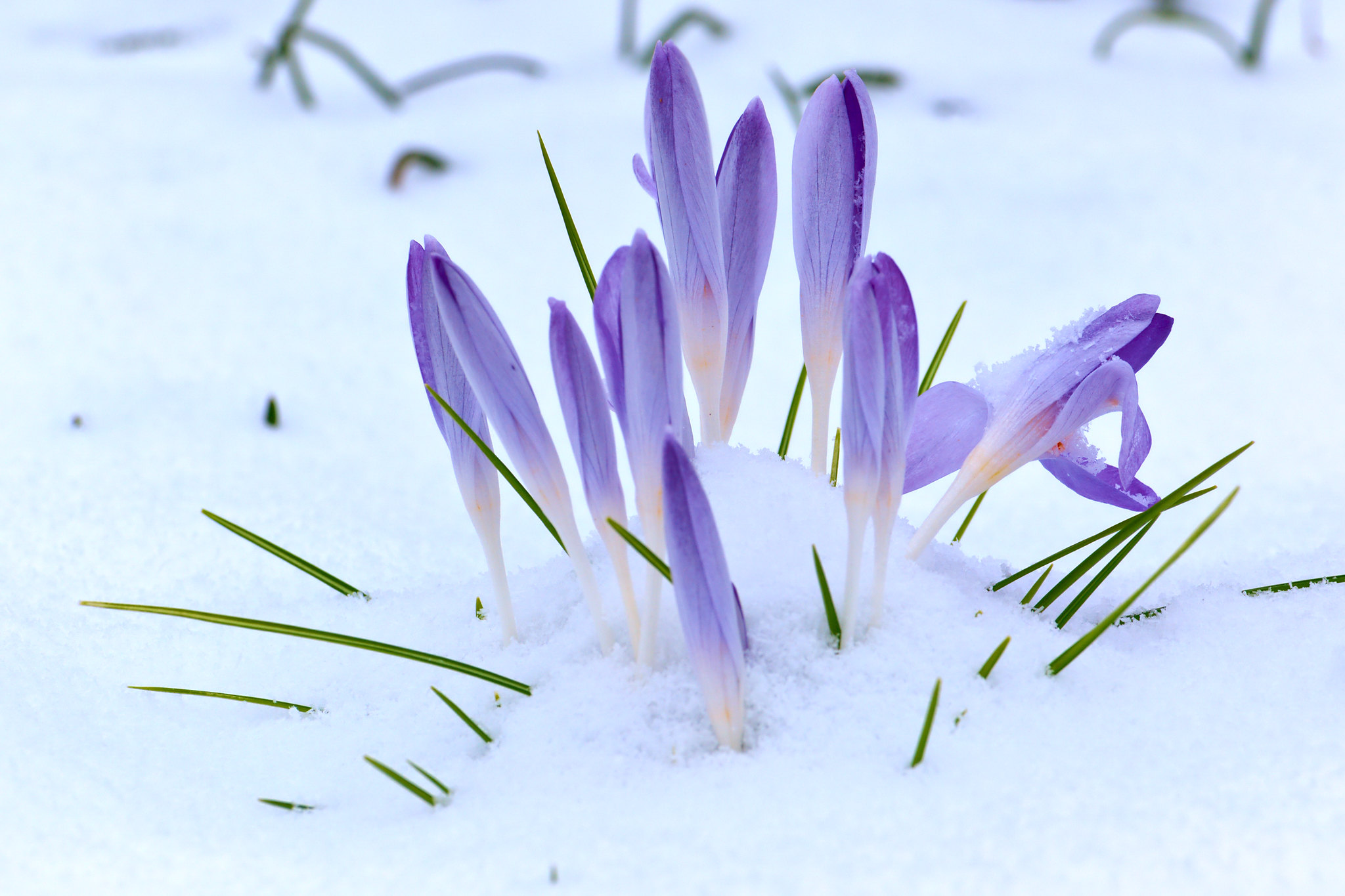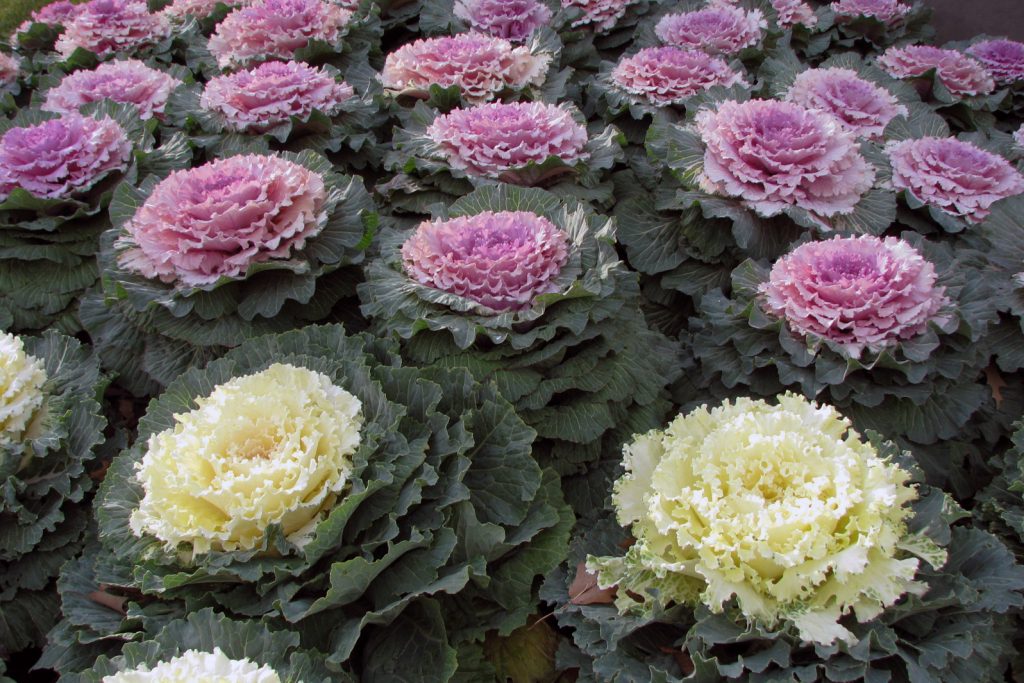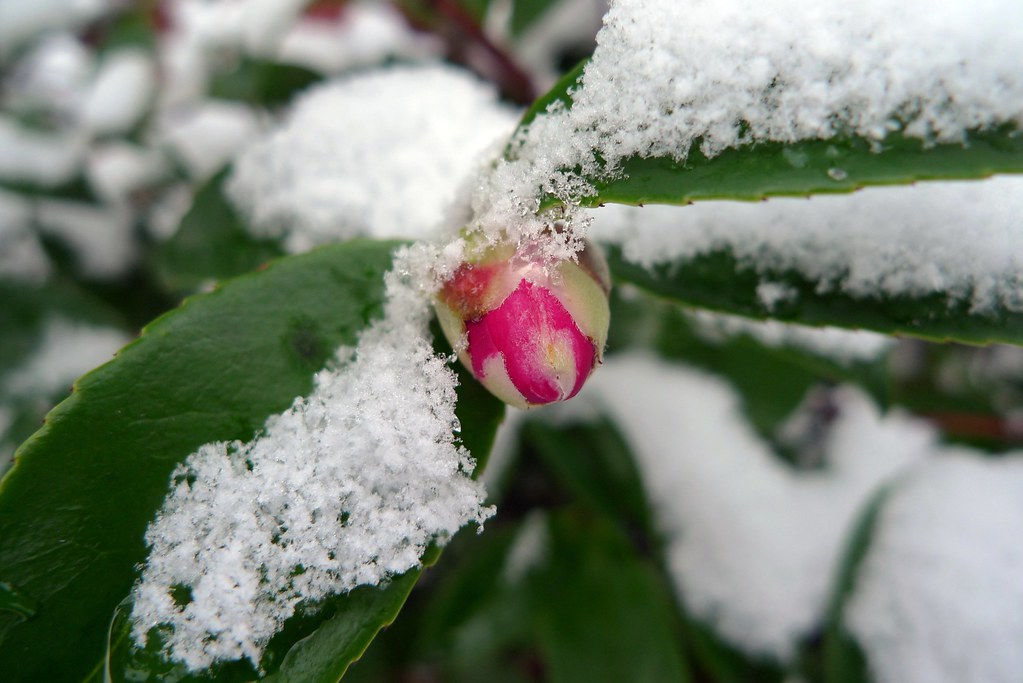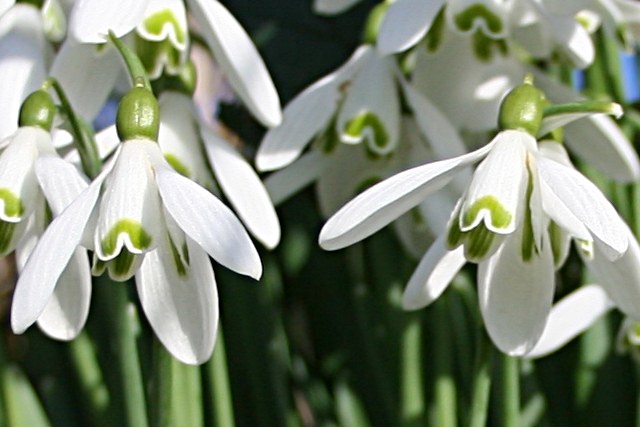14 Winter Flowers and Plants to Color Your Garden
BY AMANDA SHIFFLER | SEPTEMBER 19TH, 2019 | COLD CLIMATE, CREATIVE GARDENING, FLOWERS, HOME & GARDENA telltale chill in the air first thing in the morning signals that fall is quickly approaching, with winter not far behind. Truthfully, the idea of fall and winter makes me a little sad. With the change in seasons comes the annual winterizing of the garden that transforms my yard into a somewhat depressing, lackluster space. But there is a cure…plant flowers specifically for the winter that flourish in the cold!
Gardeners in warmer, southern climates certainly have winter gardening easier than those of us who have chosen to withstand snow and freezing temps. They have a much wider selection of flowering plants suitable for their climates. Finding plants hardy enough to survive single-digit temperatures is more challenging, although not impossible. It just takes some research and a bit of creativity to design a flowering winter garden.

To make it easier on you, I’ve gone ahead and done some of that research for you, listing some of the best plants for winter flowers and color in the cold weather of northern and transitional climates.
The plants have been divided into two categories: those suitable for the northern hardiness growing zones 4, 5, and 6; and plants suitable for the transitional area of the country encompassing the hardiness growing zones 6, 7, and 8. Plants in the northern zones can be planted in the transitional zone. However, the plants listed under the transitional zone are not hardy enough to survive through the harsher northern winters.
If you are unsure which hardiness zone you live in, you can use the USDA interactive map to determine it.
Flowering and Berry Plants That Give Winter Color

To get the most color during the winter, opt for some of the following plants. They add color to your garden through their decorative foliage, brightly-colored berries, and/or cold-tolerant flowers.
11 Perennial Plants for the Frozen North
- Ornamental cabbage and flowering kale (Brassica oleracea)
Hardiness Zones 2 – 11
Prized as colorful additions to home gardens, ornamental cabbage and flowering kale are in the same species as the cabbage, kale, and broccoli we eat. These cool-weather plants need cold temperatures to produce their vibrant colors of white, pink, red, and purple and will stay vibrant if left in your garden through the winter since they can withstand temperatures as low as 5℉. - Holly (Ilex sp.)
Hardiness Zones 3 – 11
This large plant family encompasses hundreds of varieties that range from shrubs about 12-inches in height to trees that tower up to 70 feet tall. Evergreen varieties give winter gardens color with their glossy green leaves and berries in shades of red, pink, blue, orange, yellow, and white. - Lenten Rose (Helleborus orientalis)
Hardiness Zones 3 – 9
A member of the Helloebore family, lenten rose is a group of evergreen perennials in the buttercup family. The leathery deep-green foliage persists through the cold and snow to put up flower spikes in late winter. - Christmas Rose (Helleborus niger)
Hardiness Zones 3 – 9
Not to be confused with the lenten rose, the Chrismas rose (or Black Hellebore) is another Hellebore that blooms during the cold. This evergreen, frost-resistant beauty opens its white or light pink blooms around Christmas, providing color from November to February depending on the variety and growing zone. - Witch Hazel (Hamamelis virginiana)
Hardiness Zones 3 – 9
The yellow fragrant flowers of the witch hazel tree appear in the fall, persisting long after leaf drop to provide a pop of color against the winter landscape. Considered an understory plant they prefer part shade locations and are deer resistant. - English Primrose (Primula vulgaris)
Hardiness Zones 4 – 8
A semi-evergreen perennial, the English primrose bears clumps of lightly scented pale yellow flowers in the midst of winter. Plants are easy to grow and readily self-seed making them perfect for naturalized gardens. Choose moist but well-drained soils in slightly shaded spots for best growth. - Cyclamen (Cyclamen persicum)
Hardiness Zones 4 – 8
Native to the Mediterranean, cyclamen plants bloom in the fall, winter, and spring when the weather turns damp and cool. Heart-shaped leaves are adorned with intricate, silvery patterns and white, pink, or red flowers that have swept-back petals resembling shooting stars. - Heathers (Calluna vulgaris)
Hardiness Zones 4 – 8
No longer as popular in the United States as other areas of the world, heathers are a great addition to a winter garden. Evergreen leaves can be green, silver, gold, or variegated depending on the cultivar with white, pink, or crimson flowers. Blossoms open in late fall or early winter; certain cultivars can withstand frost and even light snow. - Winter Honeysuckle (Lonicera fragrantissima)
Hardiness Zones 4 – 8
Lemon scented, creamy white flowers appear on winter honeysuckle plants before the leaves even emerge in the late winter, and are followed by small red berries. This deciduous shrub can grow six to ten feet in width and almost as high making it a great choice as a hedge or to create privacy barriers in your yard. - Cotoneaster (Cotoneaster horizontalis)
Hardiness Zones 5 – 8
One of my personal favorites, the red-orange berries, and foliage of this shrub brightens gardens all winter long. Cotoneaster plants can be deciduous or evergreen bushes or trees depending on the variety chosen. Creeping plants make excellent groundcovers; tall-growing specimens can be shaped into stunning hedges. - Flowering Quince (Chaenomeles speciosa)
Hardiness Zones 5 – 9
Also as Japonica, flowering quince is a hardy, woody shrub that bears thorny branches and winter-blooming flowers in red, pink, salmon, or white. Flowering quince attracts pollinators such as birds, bees, and butterflies to your garden in the warmer months. The fruit can be made into jams or jellies once ripe.
3 Perennial Plants for the Mildly Frozen Transition Zone

All of the plants mentioned for the frozen north can be planted for winter color if you live in the transition zone, as your winters are typically milder. These next three specimens are a little less hardy than the aforementioned plants but will tolerate your winter climate.
- Camellia (Camellia japonica)
Hardiness Zones 6 – 9
Available in bloom colors from white to pink, to deep red that are set against glossy dark green foliage, camellia varieties bloom in late fall, winter, and early spring. Hybrids such as the Ice Angels series have been developed to withstand winter temperatures as low as -15℉ when given some protection from winter sun and wind. - Nandina (Nandina domestica)
Hardiness Zones 6 – 9
Also known as heavenly bamboo, or secret bamboo, nandina is a broadleaf evergreen shrub grown for its interesting foliage and spectacular displays of fruit. A number of cultivars display bright red foliage from fall through the winter months to spring when new growth emerges. It can handle temperatures down to -10℉. - Winter Jasmine (Jasminum nudiflorum)
Hardiness Zones 6 – 10
The slender, willowy stems of this jasmine stand out beautifully in a winter landscape. Bright yellow, albeit unscented, flowers can blossom as early as January, just before the handsome glossy, three-leafleted leaves unfurl.
4 Bonus Plants: Spring-Blooming Bulbs and Cold-Tolerant Annuals

While fall bulbs are a great way to add late-season winter color or early-season spring color to your yard, these bulbs usher in spring but won’t brighten your yard all winter.
- Crocus (Crocus sp.) – Available in shades of purple, blue, pink, yellow, orange, and white, the tiny crocus is one of the first of all flowers to blossom.
- Snowdrop (Galanthus nivalis) – As one of the first flowers to show in the spring, these little white bells often push through a light layer of snow.
- Winter aconite (Eranthis hyemalis) – Another yellow beauty, the winter aconite pops up in later winter or early spring to a diminutive 3-6” tall.
- Tulips (Tulipa sp.) – A later bloomer than other spring-blooming ornamental, the iconic tulip still helps to announce warm weather has arrived.
Some annual plants can also hang around long enough to provide some winter color in your garden. Anyone who has planted a viola, a pansy, or snapdragon in their flowerbeds understands the tenacity of these plants. They are grown as annuals but will survive well into the cold months if left to grow and easily reseed to self-propagate for the following spring.